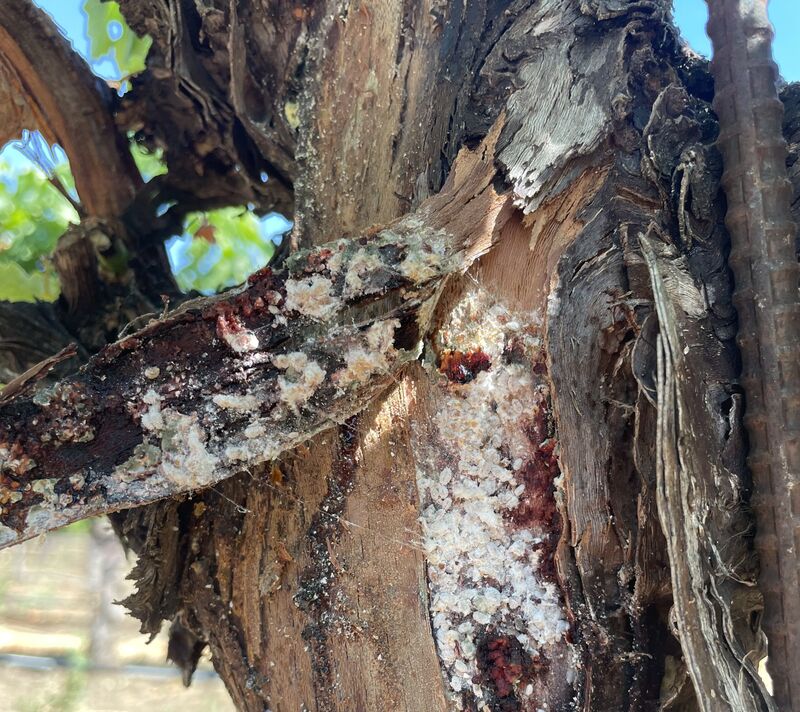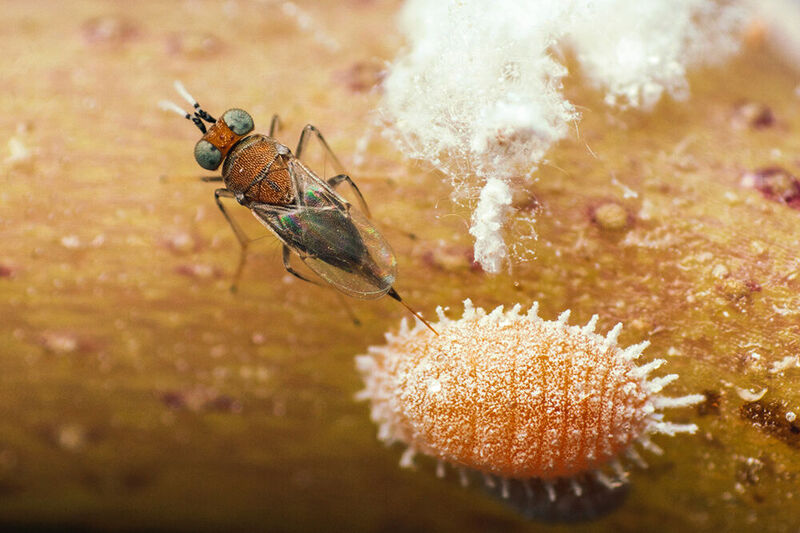Mealybugs, especially vine mealybugs, are becoming increasingly difficult to control in grapes. With chemical restrictions increasing and consumer demands shifting, many growers are turning to more organic and sustainable management methods such as augmentative insect releases. If you are new to the world of beneficial insects, then review the steps below to help you start your biological program off on the right foot:

1) Evaluate your ant pressure
- Ants farm mealybugs for honeydew, and will protect them from natural enemies, so it is crucial to apply bait where ant pressure is high.
- Start by determining which ant species you have to help you decide which bait is appropriate.
- Apply bait in early spring (March/April), before mealybugs start producing copious honeydew.
2) Start beneficial insect releases early in the season (April/May)
- Beneficials are much more effective when used proactively.
- By the time your field crew finds bleeding bark, mealybug populations are already high.
3) Release under optimal conditions
- Place bottles, such as Citripar, out of direct sunlight.
- Release early in the morning or late in the afternoon. Avoid the hottest part of the day.
- Avoid releasing during heatwaves.
4) Consider your compatible sprays
- There may come a time when you need to do a knockdown spray. Review your options ahead of time, and consider chemical side effects to native and released beneficial insects.
- In general, apply your spray first and allow it to dry before releasing beneficials.
5) Provide habitat for beneficials
- When possible, create habitats for beneficial insects with cover crops, insectary rows, or hedge rows.
- For Citripar (Anagyrus), choose plants that provide nectar, such as buckwheat or yarrow.
6) Practice patience
- It can take a few years for beneficial insect populations to build up. But rest assured that you are creating an environment that released and native insects (and your grapevines) can thrive.

Incorporating these general recommendations into your Integrated Pest Management strategy is an excellent starting point. However, it's important to recognize that each crop presents its own set of challenges and considerations. For personalized guidance tailored to your specific needs, don't hesitate to reach out to our team of Koppert experts. We're here to support you at every stage of your journey towards sustainable crop protection.
Pesticides can have (in)direct effects on natural enemies. Our side effects app tells you how harmful different pesticides are.